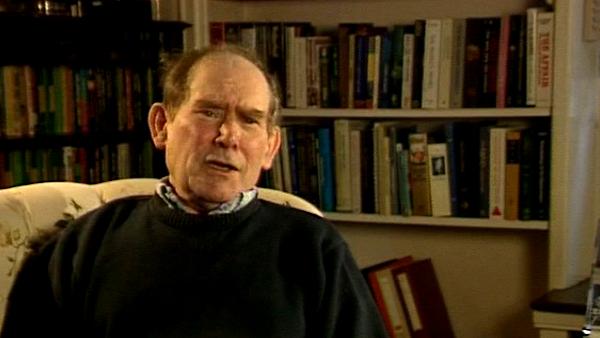NEXT STORY

Lineage and special computation: European plan vs American plan
RELATED STORIES

NEXT STORY

Lineage and special computation: European plan vs American plan
RELATED STORIES


|
Views | Duration | |
|---|---|---|---|
| 151. Using John Sulston's method for freezing nematodes | 139 | 03:00 | |
| 152. E1: The first isolated Caenorhabditis elegans mutant | 123 | 02:14 | |
| 153. Mendelian experiments with behavioural mutants | 106 | 02:50 | |
| 154. Caenorhabditis elegans: finding drug resistant mutants | 124 | 01:53 | |
| 155. Diffusion gradients in development | 132 | 02:33 | |
| 156. Francis Crick's interest in gradients | 145 | 02:01 | |
| 157. Émigrés often make the best discoveries | 186 | 03:51 | |
| 158. Computing: the beginning of the love affair | 176 | 02:28 | |
| 159. Modular 1: The first computer for the lab | 160 | 05:18 | |
| 160. Writing my own computing language for Trac | 197 | 03:04 |


One of the things I did was, to teach myself computing thoroughly, I decided to implement a language. And this language I found in a publication, it's called TRAC — T-R-A-C — It's Text Reckoner And Compiler, published in the Journal of the American Association of Computing Machinery, 1965, by a man called Calvin Mooers, who I ascertained two years ago was still alive. And I was very impressed by this because I actually did write an interpreter for it, and… and became so fascinated by this language that even on my present machines the first thing I've done is write an interpreter for Trac, and my versions of Trac include a whole lot of new constructs, and these have never been published. So I think the idea that one has a private computer language seems to me to be rather sophisticated and perhaps we can all emulate that in the future. And so… but having done that really I got to the heart of computing. The… and I think it's important, not because you know, it's an accomplishment — one likes to say like one can run a mile in, you know, in less than ten minutes or something — but simply because by thinking about computers, by thinking about other complex objects and how one will try and account for them, I think that this has laid the grounds for most of the way now that I view biological systems, and which I think increasingly everybody else will have to view them in this way. Which is of course a return to the old von Neumann paradigm which is if you can't compute it you can't understand it. And… that I… and of course the association with someone like David Marr was very interesting, and of course by that time he was interested in the way the brain works to do complex things, I've not been very interested in that. I've been much more interested in the way the genomes work, because of course in our brains there's something called consciousness lurking around and, but of course in genomes are completely unconscious and that seems to me to offer a much more challenging way of doing things.
South African Sydney Brenner (1927-2019) was awarded the Nobel Prize in Physiology or Medicine in 2002. His joint discovery of messenger RNA, and, in more recent years, his development of gene cloning, sequencing and manipulation techniques along with his work for the Human Genome Project have led to his standing as a pioneer in the field of genetics and molecular biology.
Title: Writing my own computing language for Trac
Listeners: Lewis Wolpert
Lewis Wolpert is Professor of Biology as Applied to Medicine in the Department of Anatomy and Developmental Biology of University College, London. His research interests are in the mechanisms involved in the development of the embryo. He was originally trained as a civil engineer in South Africa but changed to research in cell biology at King's College, London in 1955. He was made a Fellow of the Royal Society in 1980 and awarded the CBE in 1990. He was made a Fellow of the Royal Society of Literature in 1999. He has presented science on both radio and TV and for five years was Chairman of the Committee for the Public Understanding of Science.
Tags: The Journal of the American Association of Computing Machinery, Calvin Mooers
Duration: 3 minutes, 5 seconds
Date story recorded: April-May 1994
Date story went live: 29 September 2010